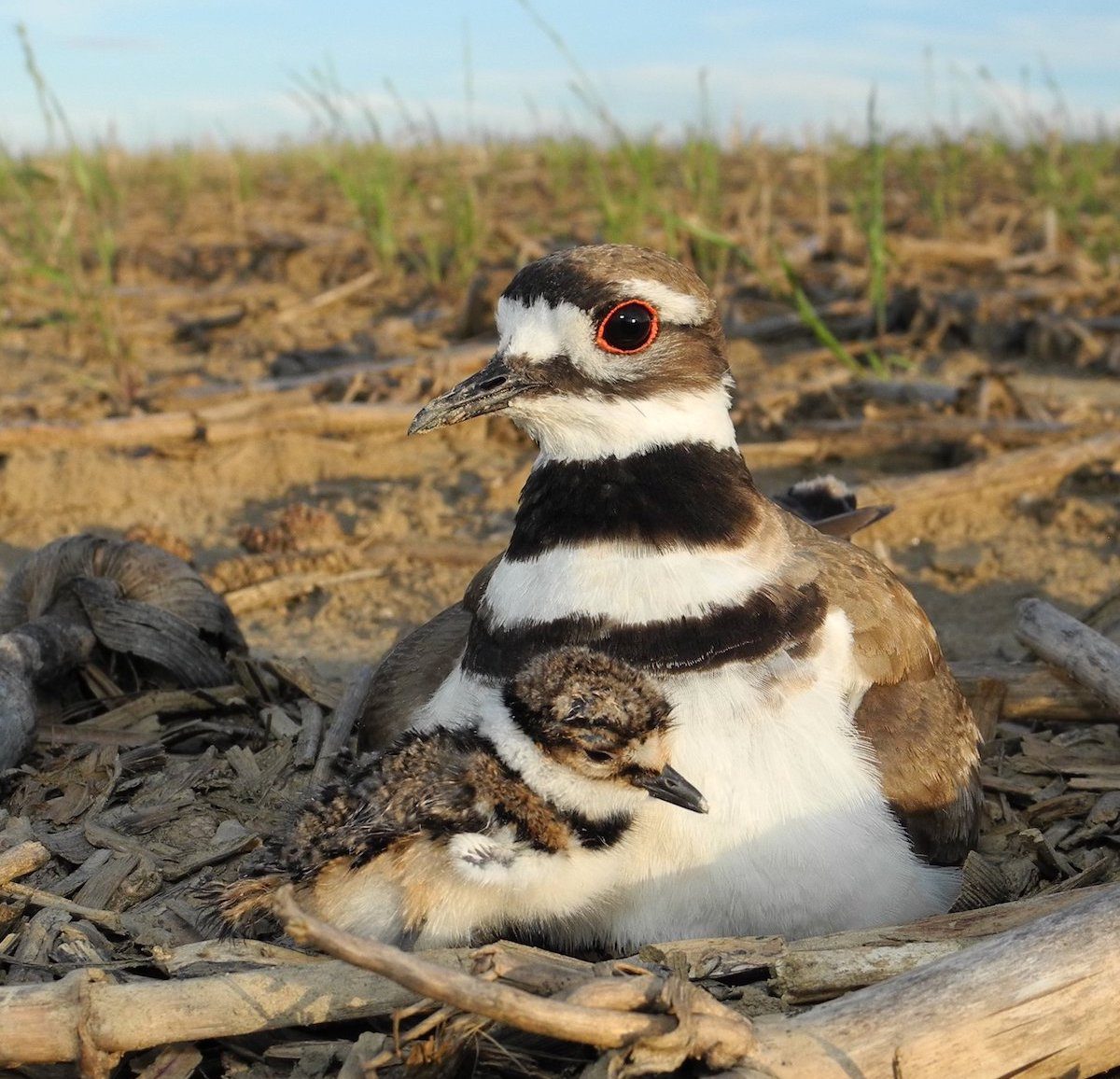Learn what a killdeer bird looks like and sounds like. Get facts about their nests, eggs and songs, and see their range map.

How to Identify a Killdeer Bird

On This Page
What Does a Killdeer Look Like?

- Scientific Name: Charadrius vociferus
- Common name: Killdeer
- Family: Plover
Killdeer are beautiful members of the plover family. This type of shorebird often lives far away from the shore. To identify a killdeer, look for distinctive markings. They have a brown back, white neck ring, two black bands across a white breast and a long tail with an orange rump that shows only in flight or display. The adults measure 10-1/2 inches in length with a wingspan of 24 inches.
Learn more about plover birds and where to find them.
Nest and Eggs

This bird does not make a nest. Four eggs, heavily marked with brown spots, scrawls and blotches, are placed on open ground, where they blend in with the surroundings. To attract them to your backyard, offer a protected gravel area where it can lay its eggs. It takes more than three weeks for killdeer eggs to hatch.
When something approaches its nest, the killdeer spreads its wings and tail, scolds and may even fly at it. If a potential predator comes very near, the bird tries to lure it away from the nest by playing wounded. Either parent may put on a broken-wing act, fluttering away as if injured.
Killdeer are fully feathered when they hatch. As soon as they dry, sometimes in as little as five minutes, they will leave the nest.
Can You Move a Killdeer Nest?

“I discovered a killdeer family nesting in the middle of my driveway. I’m worried we’ll disturb them or someone else driving in won’t see them. Can I relocate the nest?” asks Birds & Blooms reader Margaret Wilcox of Tyron, Oklahoma.
Birding experts Kenn and Kimberly Kaufman say, “Killdeers have an instinct to lay their eggs on hard, open ground, and driveways often fit the profile. Unfortunately, relocating the nest often doesn’t work. Ground nesters tend to react strongly to location, and they may not recognize their own eggs if you move them even a few feet away. If you believe they’re doomed where they are, you could try moving the eggs to the nearest safe spot and hope that the adults will find them. The good news is that young killdeers can walk shortly after they break out of the shell, so if the eggs make it to hatching, the young will soon be able to scamper to safety.”
Backyard Tip: If you find a bird’s nest on the ground in a high traffic area, put up a sign or flags to warn others not to disturb it.
What Does a Killdeer Eat?

These birds do not visit bird feeders. They primarily eat insects, and occasionally earthworms, crayfish and weed seeds.
Kenn and Kimberly say, “Attracting them to a feeder would be a challenge; we don’t know anyone who has ever done it. These birds feed on many kinds of insects (especially grasshoppers and beetles), earthworms and sometimes snails or small crayfish. If you’re determined to try, you might put out mealworms near where the killdeer have been spending time and see if they notice them.”
Killdeer Song and Call

Listen to their song. Their voice is a noisy call of “kill-dee” and repeats “dee-dee-dee.”
Bird songs provided by the Cornell Lab of Ornithology.
Learn all about wading birds.
Range Map and Habitat

Look for these birds on lawns, cemeteries, parking lots, golf courses and cultivated fields, usually away from water. Because killdeer aren’t choosy about nest location, they are among the most successful shorebird species. But nesting near humans also leads to pesticide exposure and vehicle collisions.

Range maps provided by Kaufman Field Guides, the official field guide of Birds & Blooms.
About the Experts
Kenn and Kimberly Kaufman are the official bird experts for Birds & Blooms. They are the creators of the Kaufman Field Guide series and they lead birding trips all over the world.
Sources
- All About Birds – Killdeer




















